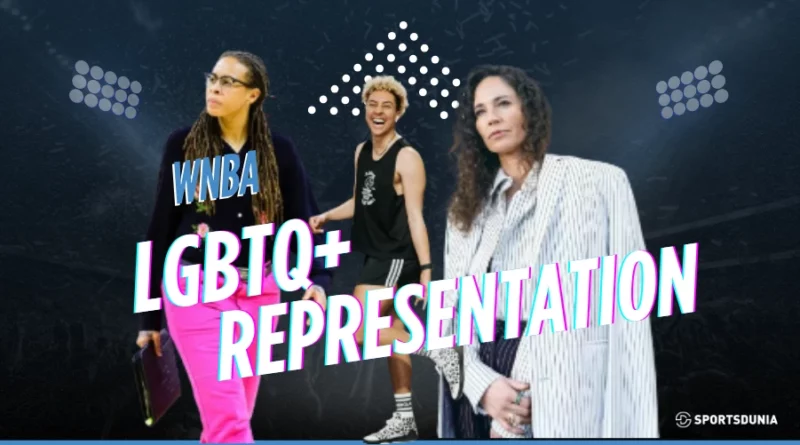Explore How Many WNBA Players Are Gay
Professional sports used to reward athletes based on their physical endowment but LGBTQ+ players encountered significant obstacles. Throughout history, several athletic figures had to conceal their identities due to biases as well as unfair treatment. A positive change has occurred within the professional sports world because leagues are making progress toward acceptance and players gain confidence to express themselves without hiding their identities.
The WNBA positions itself in the front of professional sports leagues because it presents the most welcoming environment for LGBTQ+ athletes. Throughout its history, this league established complete support for diversity. The WNBA extends its support to LGBTQ+ athletes by providing them platforms where they can be openly themselves and simultaneously celebrate their sports contributions which makes the league a leading authority in sports inclusivity.
What Percentage of WNBA Players Are Gay?
Determining the exact percentage of WNBA players who identify as gay, lesbian, or bisexual is challenging due to personal privacy and varying levels of public disclosure. In 2022, Outsports reported that 20% of WNBA players on current rosters were publicly out as LGBTQ+.
By 2024, the number of openly LGBTQ+ players had increased. A report from Write Through the Night listed 41 active players who had come out publicly. Given that the WNBA comprises 12 teams with 12 roster spots each, totaling 144 players, these figures suggest that approximately 28% of players were openly LGBTQ+ in 2024. Below is a comparison of the number of openly gay players in the WNBA in 2022 and 2024:
| Year | Number of openly LGBTQ+ players | Approximate % | Source |
| 2022 | 29 | 20% | Outsports |
| 2024 | 41 | 28% | Write Through the Night |
The reported statistics involve players who share their sexual orientation with the public. The WNBA could hold more LGBTQ+ players than current statistics show since certain individuals supposedly maintain secrecy about their sexual orientation.
Notable LGBTQ+ WNBA Players
Through its leadership, the WNBA functions as an LGBTQ+ advocate. Many of its female athletes use their platforms to advocate for LGBTQ+ rights and inclusion. We have listed some WNBA players who are a great representation for the community.
Sue Bird
Sue Bird claimed fame as a historic WNBA champion who has earned 13 All-Star selections and plans to enter the Hall of Fame while players consider her among the best basketball players ever. In 2017 the professional athlete announced her gay identity to the public while revealing her romantic bond with Megan Rapinoe from the United States Soccer team.
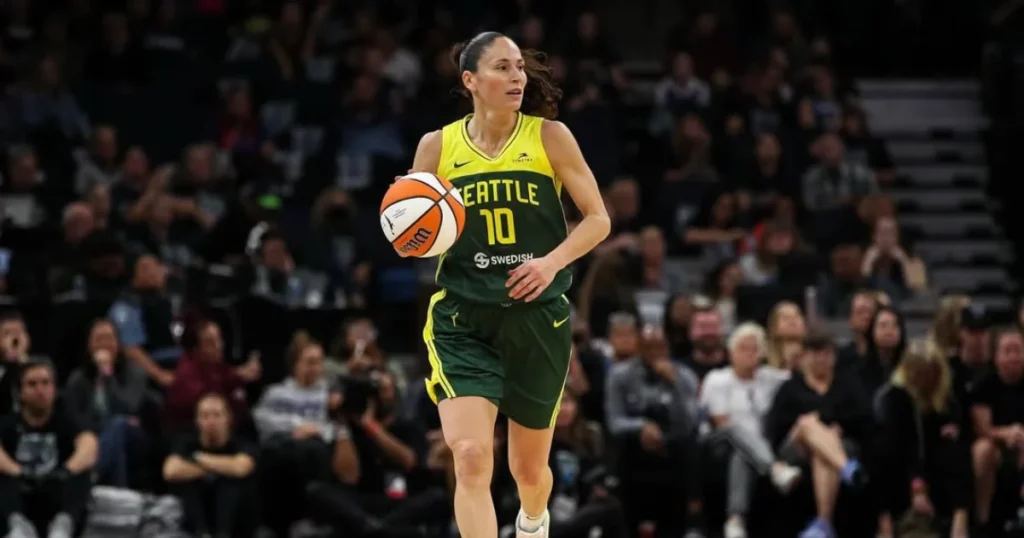
During her time away from basketball Bird dedicates herself to advocating for equality among gender groups and as well as LGBTQ+ rights together with social justice initiatives. She uses her immense support for WNBA activist work to join anti-racism initiatives. She also makes efforts to promote diversity within LGBTQ+ communities.
Also Read: Top 10 Hottest WNBA Players of All Time
Brittney Griner
The Phoenix Mercury set history in 2013 by choosing Brittney Griner as their first selection in a professional sports draft while she emerged as the initial openly gay athlete to reach this position. Since the start of her professional career, Griner demonstrated outspokenness regarding her identity while confronting discriminatory challenges faced by LGBTQ+ athletes. Basketball takes up most of her time but she makes additional efforts to advance LGBTQ+ inclusion and promote mental health awareness.
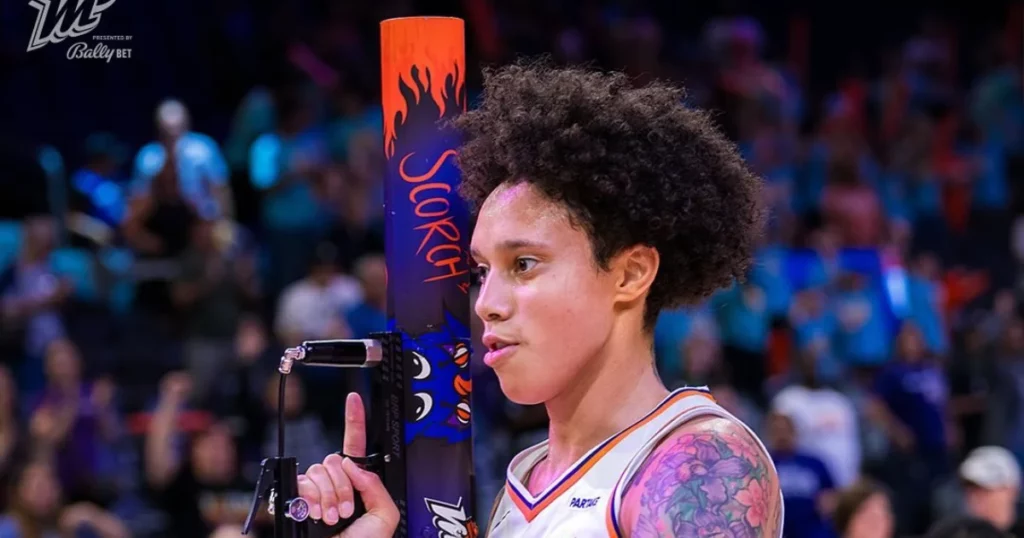
Brittney’s activism took a central role following her unlawful imprisonment in Russia during 2022 when numerous people demanded her freedom. During her detention period, both the WNBA and the LGBTQ+ community showed their strong support for her which solidified her position.
Elena Delle Donne
Elena Delle Donne the two-time WNBA MVP and skilled league legend came out in 2016 when she revealed her engagement to Amanda Clifton her long-term partner. Delle Donne revealed her sexual identity after experiencing family support which allowed her to approach it with determination.
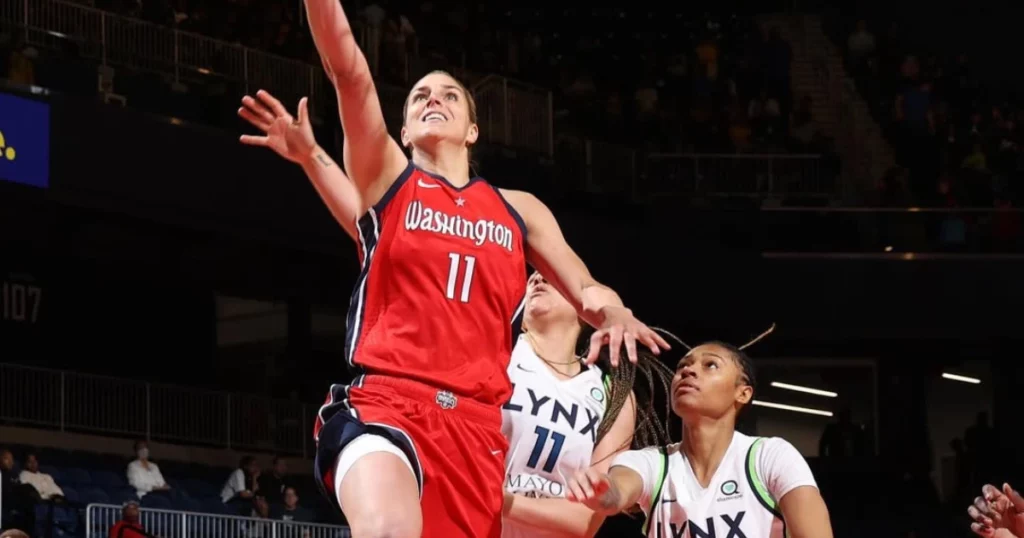
The Washington Mystics player through her exceptional performances on the court secured massive popularity that she dedicated to LGBTQ+ inclusivity and awareness campaigns. Through her advocacy, she supports disability rights by strongly standing by her disabled and blind and deaf sister Lizzie.
Layshia Clarendon
The WNBA sports world welcomed trailblazing transgender icon Layshia Clarendon after they became the first player to openly identify as both non-binary and transgender. As a WNBA veteran who has played for multiple league teams, Clarendon continues to assert themselves publicly about LGBTQ+ rights alongside gender inclusivity and mental health awareness. Clarendon performed top surgery in 2021 followed by revealing their experience to raise understanding of transgender athletes in sports.
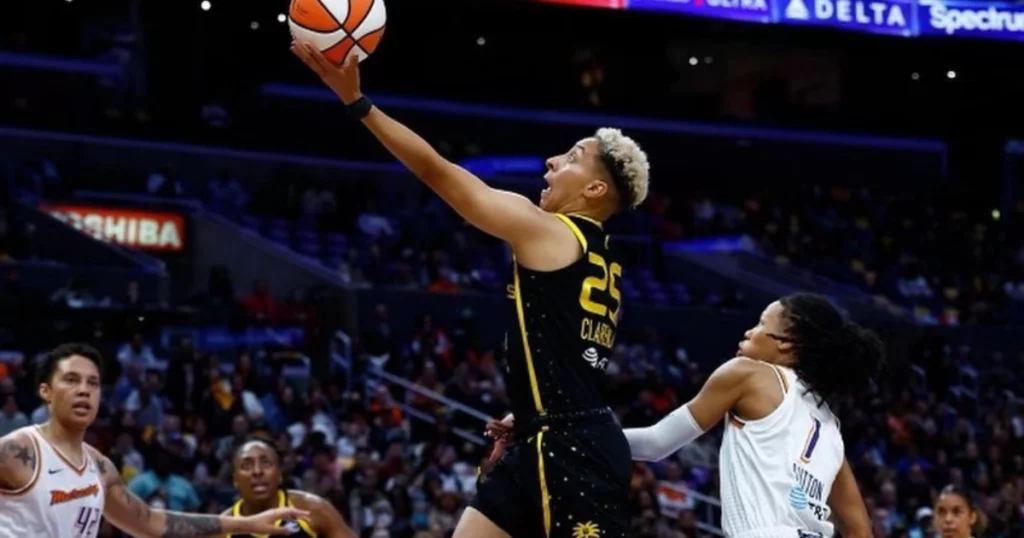
Clarendon uses their professional platform to help LGBTQ+ youth through partnerships with inclusive organizations while also educating the public about athletics needs for gender diversity. By embracing their authentic self and living publicly the transgender community inspires numerous young athletes who need support in their identity exploration.
Seimone Augustus
As a WNBA champion, Olympic winner, and top competitor in league history Seimone Augustus has stood as an LGBTQ+ rights supporter throughout her professional career. Through her 2012 public announcement, she confirmed her sexuality as gay and championed the fight for marriage equality in America which made major contributions to opening professional sports to the LGBTQ+ community at a time when few players were out.
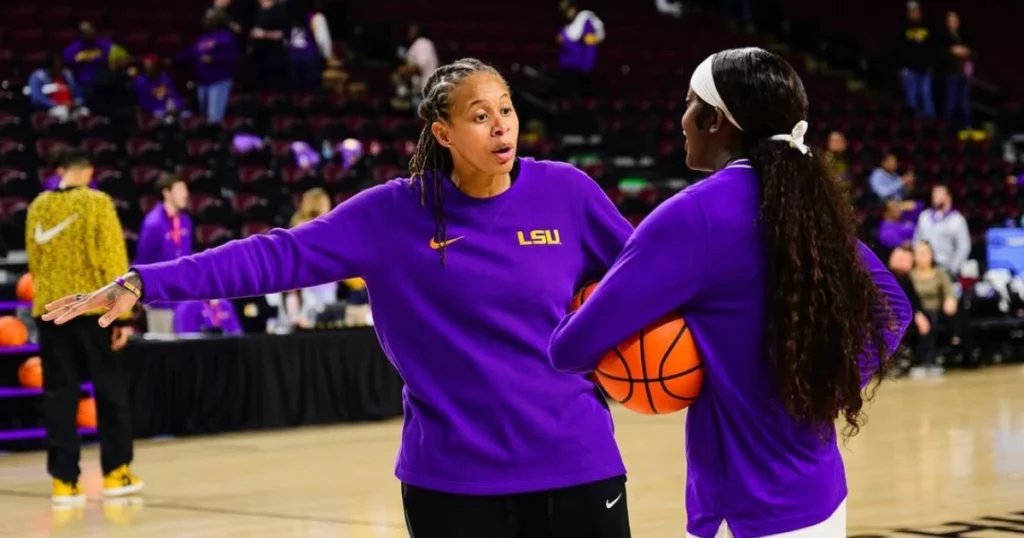
Augustus brings her support for both LGBTQ+ inclusion and racial justice through her work beyond basketball competitions. Through public conversations, she has emphasized LGBTQ+ athletic difficulties and actively built a welcoming future for young LGBTQ+ athletes. The retirement of her active career has not slowed down her commitment to basketball. Seimone now serves as a coach while mentoring others in addition to pushing forward sports equality initiatives.
Also Read: Top 10 Greatest WNBA MVP Award Winners of All Time
What percentage of WNBA players are LGBT?
According to recent reports in the 2024 WNBA season, there were 42 openly LGBTQ+ players across the league’s 12 teams. This suggests that approximately 29% of WNBA players are openly LGBTQ+.
How does the WNBA support LGBTQ+ players?
The WNBA actively supports LGBTQ+ players through advocacy, inclusive policies, Pride events, and partnerships with LGBTQ+ organizations.
Which WNBA players have come out as gay or bisexual?
Several WNBA players, including Sue Bird, Brittney Griner, and Elena Delle Donne, have publicly come out as gay or bisexual.
Who was the first openly gay WNBA player?
Sheryl Swoopes was the first openly gay WNBA player, coming out in 2005.
Are there any current WNBA players who are openly LGBTQ+?
Yes, several current WNBA players are openly LGBTQ+, including Sue Bird, Brittney Griner, Diana Taurasi, Elena Delle Donne, Layshia Clarendon, and Natasha Cloud.
Are there any LGBTQ+ couples in the WNBA?
Yes, WNBA couples include Sue Bird and Megan Rapinoe, Elena Delle Donne and Amanda Clifton, and Courtney Vandersloot and Allie Quigley.
How many WNBA players are gay?
The exact number of gay WNBA players is unknown, but the league is widely recognized as one of the most LGBTQ+ inclusive, with many players publicly out.
Are most WNBA players gay?
No, while the WNBA has a strong LGBTQ+ presence, its players have diverse sexual orientations, and the majority are not publicly identified as gay.
